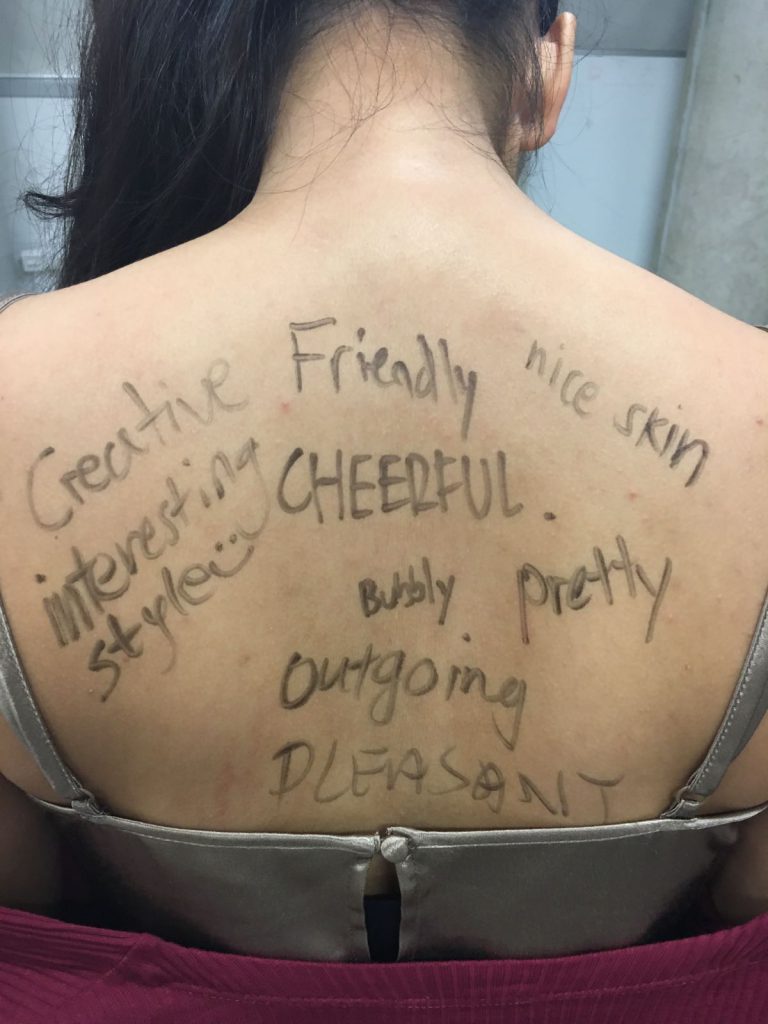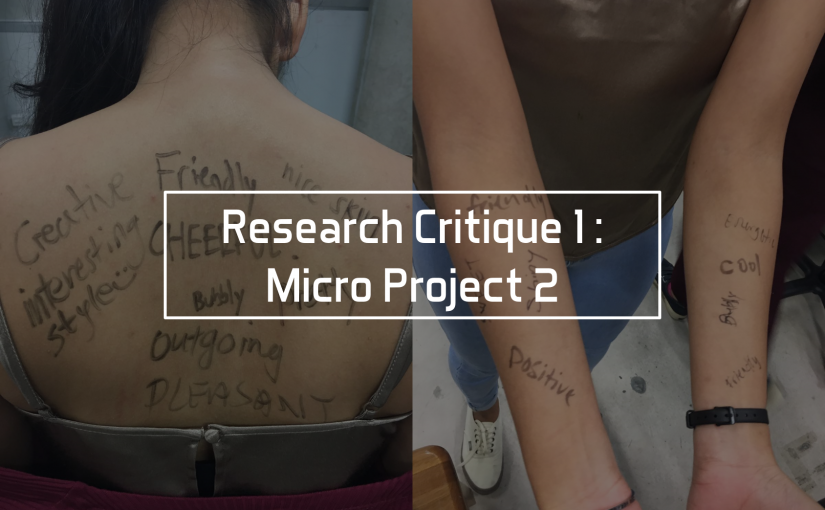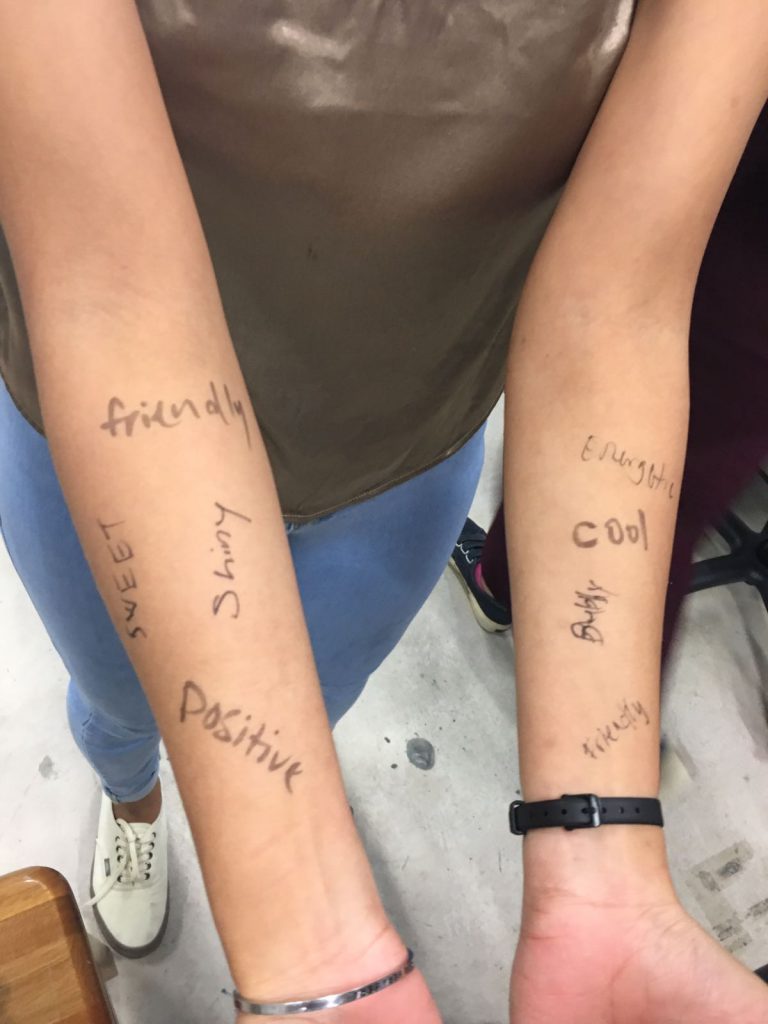First Impression (In collaboration with Felicia and Hazel)
Naturally, we get curious about what our first impressions to other people are. It isn’t “socially acceptable” to ask people you just met about their first impression of us, we usually only ask this question once we get to know them a little bit better. However, by then, they would already have forgotten about the first impression or their judgment could be clouded by their current impression they have of you. Thus, we decided to conduct an experiment to ask people we have never met before about their first impression of us. Generally, the use of art as a way to tackle or bring awareness to social issues in our community has become prominent.
“[…] art has become too narcissistic and self-referential and divorced from social life. I see a new form of participatory art emerging, in which artists engage with communities and their concerns, and explore issues with their added aesthetic concerns“ [34] (Bauwens 2010)
Artists involved:
- Felicia – the canvas (the one who will be “judged”)
- Fizah – the speaker (the one who will tell people what to do)
- Hazel – the videographer (the one who will record people’s reactions)
We begin by asking Felicia what she thinks her first impression is; bubbly, scary. We wanted to make a comparison on her idea of what she thinks versus what others actually think.
After which, we went to the ADM lounge to gather the first impressions. We got the participants to contribute to the artwork by writing their impressions on Felicia’s arms (only at the beginning) and back. We hoped that we could gather a plethora of impressions from different people.
As mentioned in Marc Garrett’s article on D.I.W.O (Do-It-With-Others),
“The practice of DIWO allows space for an openness where a rich mixing of components from different sources crossover and build a hybrid experience.”
Having collected enough impressions, we wrapped up the experiment and shared our findings with the class.

Analysis
The artwork requires participants’ involvement through writing their first impression of Felicia on her back. In doing so, we (the artists) do not have control over the final outcome of the artwork. We (Hazel and myself) are there to provide instructions to the participant whereas on Felicia’s part she provides them a canvas. The participants have the freedom to respond in whatever way they want. Hence, we have no control over the direction and outcome of our artwork that traditional artists have.
The idea of involving people by allowing them to contribute can also be seen in the artworks discussed such as the Human clock by Craig D. Giffen and the Sheep Market by Aaron Koblin. Without participants’ contributions, the artworks will remain at a standstill without any development.
Similar to Cut Piece by Yoko Ono, we made use of the interaction between participants and artists where the participants were up close with our canvas and had to write on her. Differing from the Please Change Beliefs by Jenny Holzer which is web-based and does not involve physical interaction.


